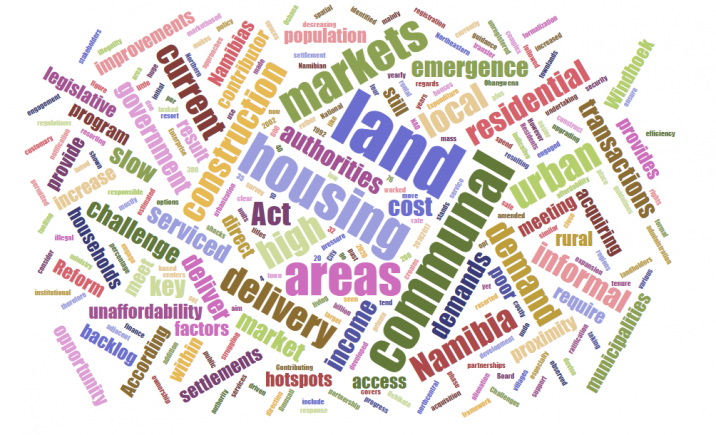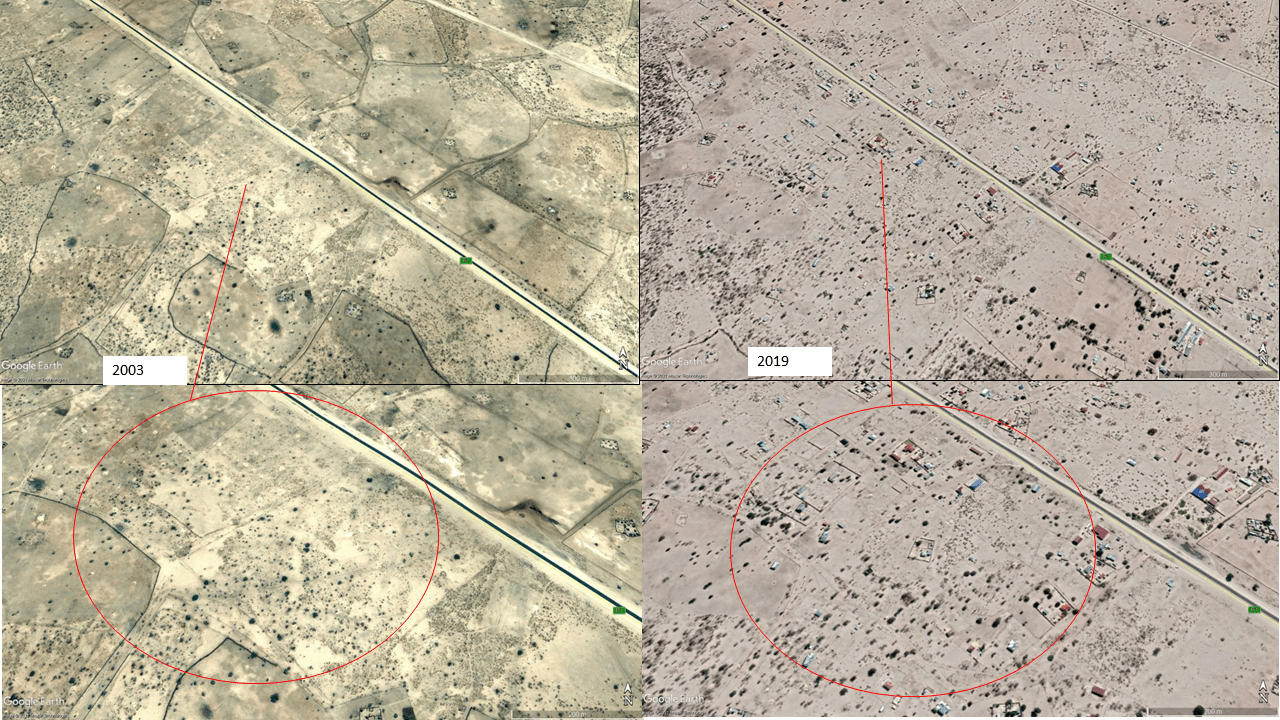A dispatch from the "Land Markets" project

This article is a dispatch from the "Land Markets" project led by Romie Nghitevelekwa (UNAM) and Royal Mabakeng (NUST) . Read more about the project HERE.
The demand for housing in Namibia has been on an increase for the past 10 years or more, with local authorities struggling to deliver land for housing development. In late 2013, the government launched the mass housing programme with an aim of meeting the demands for housing, this is in addition to the already existing programme such those under the Namibia Housing Enterprise. Namibia’s urbanization rate stands at 4%, resulting in a high demand for land for housing and pressure on current service delivery. With the increasing urbanization rate, majority (which is 40%) of the urban population live in informal settlements. This is indicative of the slow delivery of land and unaffordability by especially the low income earning population. There are many contributing factors to slow land delivery for housing purposes including: high cost of serviced land, unaffordability by households and poor administration. According to the Income and Expenditure Survey 2016/2017, Namibian households spend about 32% of their income on housing. The Namibia housing backlog was estimated at 300 000 units, which will require 76 billion NAD to clear the backlog.
Those who move to urban areas and are not able to access housing finance, tend to resort to rental options or construction of corrugated housing structures in informal settlements. The local government through the municipalities is responsible for the delivery of land for housing. Local authorities are tasked to deliver land through the Local Authorities Act, Act 23 of 1992 as amended. Some municipalities like Windhoek have resorted to the use of private public partnerships or similar approaches to deliver land. However, this has not yet met the current demands, as developed houses are still costly for the urban poor. During the 2020, the City of Windhoek engaged in a program of informal settlement upgrading in partnership with the Ministry of Urban and Rural Development, plus the National Housing Enterprise. The target was set at 200 titles for the initial phase. This too is still too little to meet the current demand for housing. Efforts such as the newly tried approach of pre-allocation hold potential for addressing housing needs in Namibia’s urban areas.
Other town areas such as Omuthiya are experiencing the same challenges. Omuthiya is the capital of Oshikoto Region in northern Namibia, and is situated approximately 10 kilometres from the northern border of the Etosha National Park. According to Omuthiya Town Council, the town has about 5,000 residents. Like many other towns, the waiting list for housing is long (currently there are 3000 people on the waiting list since 2010), resulting in the development of not only informal settlements within the town boundaries but also the emergence of peri-urban areas that are organically developing primarily for residential purposes. With annual house prices estimated to about 800,000 (see FNB Residential Property Report, 2019) in Omuthiya Town, the housing market remain out of reach for many residents, a challenge that is experienced across urban areas in Namibia. Driving along for about 6/7 kilometres along the B1 Highway in the direction of Ondangwa, one observes enclaves of housing development in the villages adjacent to Omuthiya Town, but these are on communal land. The aerial images below show changes in the landscape of these villages from 2003 and 2019, where housing development is clearly observable. Customary landholdings have been subdivided to make way for housing development.
Figure
1 Differences in housing development in villages adjacent to Omuthiya Town between 2003 and 2019Urban and rural land questions are two sides of the same coin
We draw the link between the housing crisis in urban areas and the increase in market transactions over land in Namibia’s communal areas. Land administration in Namibia’s communal areas is vested in the traditional authorities who are responsible for allocation and controlling access to land. However, over the years, people can now access land through existing landholders and traditional authorities would come in for legitimating land rights. Market transactions over land are most prevalent in peri-urban areas whereby residents in the areas in proximity to towns give up rights over their lands (in whole and parts) through market exchange. These exchanges are mostly driven by the high demand of land for residential purposes, but also generally as a result of the reduction in the availability of land under the management of traditional authorities. Communal land covers only about 35% of Namibia’s land area and the population relating to communal is experiencing scarcities, with limited land available for allocation. Other factors at play are affordable prices offered by existing land holders in communal areas land as opposed land prices in urban areas, as according to the Communal Land Reform Act, Act 5 of 2002, communal land is cannot be traded. Because of its illegality as per the Act, there are no regulations to provide guidance, nor policy direction on market exchange over land. While Namibia is currently undertaking registration of customary land rights on communal land to provide security of tenure, illegal land markets are due to undo this progress, especially on the element of keeping records of land parcels on communal land. With the current land markets, social realities on the ground constantly change meaning land parcels mapped over the past few years may have changed as result of sub-division into tradable parcels. As such this requires pro-active land administration system that is up to date with the changing realities. While the prohibition of market exchange over land is understood and justified in the context of communal land’s function of providing a safety net especially for the rural poor, leaving market exchange to take place unregulated will undo the gains of the communal land reform programme of securing land rights in the communal areas. A fit for purpose land administration is required and this will provide Namibia with an opportunity to adapt to the ongoing social realities at practice level, and an opportunity implement responsive legislation, spatial and institutional frameworks in the administration of communal land.
Contact: rnghitevelekwa@unam.na
This project is an ILMI Seed Grant 2020 Awardee. For more infomation about the projectes, see: http://ilmi.nust.na/seed-grants-2020-awardees

